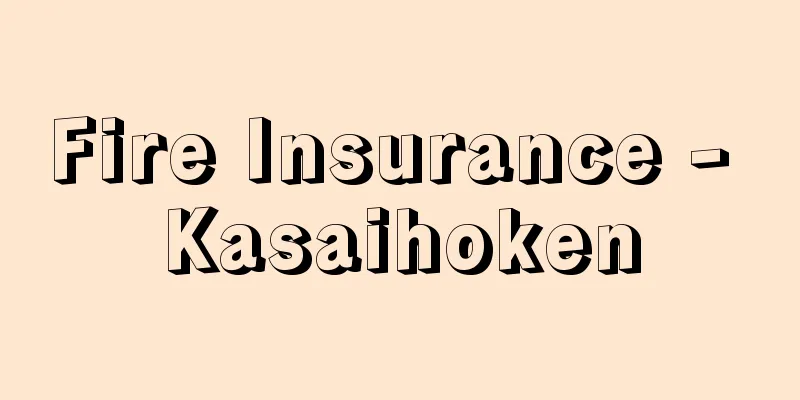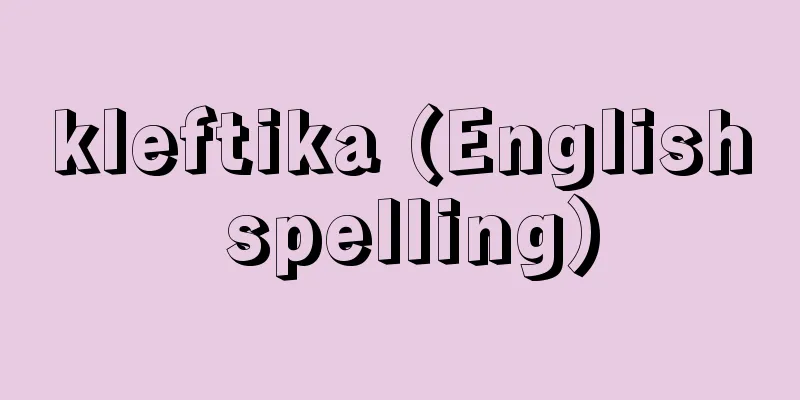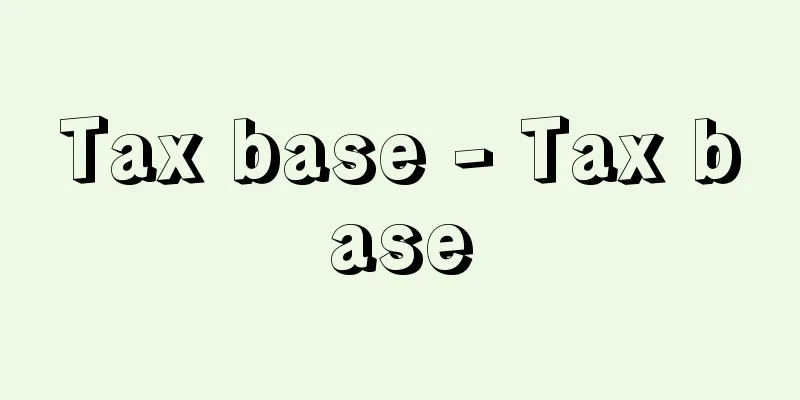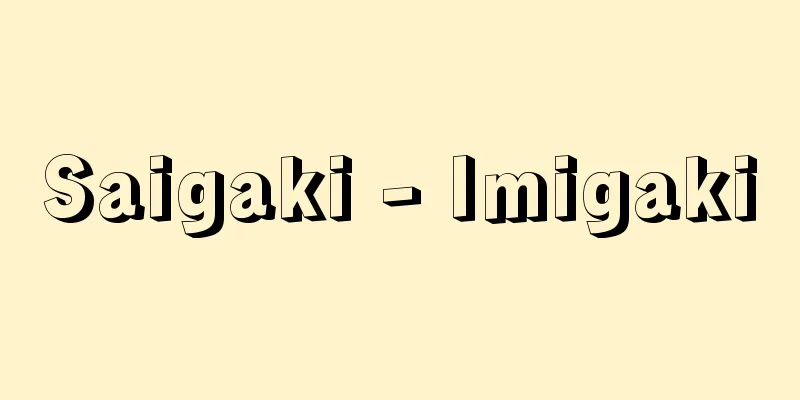Fire Insurance - Kasaihoken

|
Insurance intended to compensate for damage caused by fire accidents, etc. This is a type of non-life insurance that compensates for the actual amount of loss when buildings (homes, stores, offices, factories, warehouses, etc.) and the movable property contained therein (furnishings, fixtures, equipment, merchandise, products, machinery, equipment, etc.) are damaged by natural disasters such as fire, lightning, bursting/explosion, wind/hail/snow disaster, etc. [Naoshi Oshio March 19, 2018] historyThe history of fire insurance began with three pioneering fire insurance companies established at the end of the 17th century in England, the birthplace of modern insurance. The first fire insurance company in history was Fire Office (renamed Phoenix in 1705), which began business in 1680 as a joint stock company of builders. The company was established by builders with the aim of creating new opportunities for profits for entrepreneurs, against the backdrop of increased demand for insurance against fire risks for buildings and houses triggered by the Great Fire of London (1666). However, at that time, before the Industrial Revolution, the business environment was tough for the other two companies due to insufficient demand for insurance and underdeveloped insurance concepts. In the 18th century, Britain was experiencing an unprecedented boom in entrepreneurship and speculation, and due to the underdevelopment of insurance technology and the inherent riskiness of insurance, the insurance business was used for fraudulent and speculative purposes. For this reason, the Bubble Act was enacted in 1720, prohibiting the operation of insurance business in the form of a joint-stock company, except for the two Royal Chartered Marine Insurance Companies that had been established at the time. Although the two companies obtained a monopoly on the marine insurance business, due to management problems they also started a fire insurance business the following year, but their performance was poor. This law remained in place for over 100 years until it was abolished in 1825, and as a result no fire insurance companies with legal personality and trustworthy joint-stock companies emerged after that, but Sun Fire Office, which was established in 1710 before the law came into force (it took over from Exchange House Fire Office, a personal property fire insurance company that had been privately run since 1706), established its technical foundations for insurance against the backdrop of the modernization of the market economy and developed the fire insurance business as a monopoly. Since the 19th century, the company has expanded into various parts of the world. Japan's fire insurance began when Fukuzawa Yukichi introduced it for the first time as "Kaji Shogo" in his "Western Affairs" (1866) and "Western Travel Guide" (1867). The Meiji government promoted the introduction of foreign systems and modern production techniques as part of its policy of promoting industry. A bill to implement national compulsory fire insurance was prepared at the suggestion of foreigners invited to Japan, but it was scrapped due to opposition from those who advocated the British style of privatizing insurance. However, this plan was later used as a reference to establish the first fire insurance company, Tokyo Fire Insurance Co., Ltd. (now Sompo Japan Nipponkoa Insurance Co., Ltd.) in 1887 (Meiji 20). The company only insured against fire risks, but it fell into a management crisis due to increased payments and a lack of capital caused by a series of large fires, and Yasuda Zenjiro took on the task of restructuring it in 1893. Around 1892, insurance companies began to appear that used a pay-as-you-go system rather than one based on probability calculations, and similar insurance companies were established one after another. In order to establish a modern insurance system, the government established regulations regarding insurance contracts, including fire insurance, in the Commercial Code in 1899, and enacted the Insurance Business Act in 1900, granting insurance business licenses only to insurance companies and mutual insurance companies. Fire insurance grew as the main sector of the non-life insurance business until the period of high economic growth, and today it has developed into a broader insurance sector that includes not only fire risk but also compensation for natural disasters. [Naoshi Oshio March 19, 2018] Insurance claim calculation methodFire insurance contracts provide compensation based on the current market value of buildings and movable property, so the amount of insurance payout is calculated based on the ratio of the insured value of buildings and movable property immediately before the loss occurs (the current market value at the place and time when the loss occurs) to the insurance contract amount, up to the insurance contract amount agreed upon at the time of contract. If this ratio is 100%, the actual amount of damage incurred is paid (actual loss indemnity method). If it is less than 100%, in the case of total loss, the amount paid will be up to the contract amount, but in the case of partial loss, the principle of proportional indemnity applies, so the amount of insurance payout will be less than the contract amount. The principle of proportional indemnity is the following principle in the calculation of insurance payouts.
In order to deal with problems such as the current value valuation method, the principle of proportional compensation, and the decrease in the insured value due to the deterioration of buildings and household goods over time, the value agreement insurance (special clause) and new value insurance (special clause) were developed. The value agreement insurance (special clause) covers houses, shops (shops and houses) including residential areas, and household goods. The contract amount is the reconstruction (new construction) value for buildings and the replacement (re-acquisition) value for household goods. However, even if the reconstruction value is set as the insurance contract amount, there is a possibility that the construction costs will rise so much that it will not be possible to repair or rebuild with the insurance money. In general, long-term insurance contracts are easily affected by economic fluctuations, such as the depreciation of the insured object and the decrease in the value of the insurance money due to inflation. In addition, the new value insurance (special clause) also has the reconstruction value or replacement value as the contract amount, just like the value agreement insurance (special clause), but the new value insurance (special clause) has no limit on the area of the building. However, the condition is that the building must be rebuilt (newly built) within two years after the disaster. In the case of fire insurance, the insurance policy clearly states that insurance will not be paid (exemption) if damage to buildings or personal belongings is caused by an earthquake, eruption, or tsunami. In order to cover damage to buildings and personal belongings caused by earthquakes, etc., a separate option for personal earthquake insurance (special clause) must be added to the main fire insurance contract. [Naoshi Oshio March 19, 2018] Types of Fire InsuranceThe main types of fire insurance and the special clauses that can be added are as follows. However, there are slight differences in the types and names of special clauses among non-life insurance companies. (1) Residential Fire Insurance: Covers damage caused by fire, lightning, explosions, wind, hail, and snow disasters. Special clauses that can be added include personal liability insurance, store liability insurance, renter liability insurance, earthquake insurance, and price agreement insurance. (2) Comprehensive Home Insurance: In addition to the scope of coverage of home fire insurance, this also covers damage caused by falling, flying or collision objects, water damage, violent acts caused by disturbances or group activities, and damage caused by theft or removal of belongings (if home contents insurance is purchased). Special clauses that can be added include personal liability insurance, renter's liability insurance, repair cost insurance, earthquake insurance, and value agreement insurance. (3) Comprehensive store insurance: Covers stores, offices, and the residences and workshops used in conjunction with these, and provides the same coverage as comprehensive housing insurance, but different special clauses can be added. The special clauses that can be added include personal liability insurance, store closure insurance, store liability insurance, price agreement insurance, new value insurance, and earthquake insurance. (4) Ordinary Fire Insurance The difference between ordinary fire insurance for general properties and comprehensive store insurance is that the former covers stores, offices, houses with stores, workshops, and outdoor equipment and devices, while the latter is comprehensive insurance and covers damage to the insured property such as water damage, falling, flying, and collision of objects, violence caused by disturbances and group activities, theft, and household goods taken from the insured property (if household goods insurance is taken out). In addition, in the case of comprehensive store insurance, the principle of modified proportional compensation is adopted to calculate the insurance amount at 80% of the insured value so that the insured person can receive a larger amount of insurance money, but ordinary fire insurance for general properties uses the insured value as is. Special clauses that can be added include renter's liability insurance special clause, repair cost insurance special clause, special clause for comprehensive coverage of property located on multiple sites, value agreement insurance special clause, new value insurance special clause, earthquake insurance special clause, etc. In addition to general properties, ordinary fire insurance is classified as factory property and warehouse property. Factory properties include buildings such as factories, warehouses, and offices located on the premises of factories of a certain size or larger, as well as raw materials, finished products, machinery, facilities, equipment, etc. Warehouse properties include commercial warehouses and movable property stored therein. (5) Apartment Insurance (Condominium Insurance) This insurance covers apartment buildings made of fire-resistant structures such as reinforced concrete, and the coverage is the same as that of comprehensive housing insurance. Special clauses that can be added include personal liability insurance, renter liability insurance, fire damage insurance, and earthquake insurance. (6) Long-term fire insurance: Often used to match the repayment period of a housing loan. Paying the premium in full at the time of contracting has the advantage of receiving a certain discount, but it is a heavy burden for the insured. Long-term fire insurance of more than 10 years has been discontinued for contracts made after October 2015. [Naoshi Oshio March 19, 2018] Current status of fire insuranceHowever, since the latter half of the 1990s, as the insurance industry has become more liberalized, the fire insurance offered by non-life insurance companies has become more diverse, and a new type of fire insurance in which the insurance contract amount is the rebuilding (replacement) value has become common, even without the addition of a value agreement insurance special clause. The characteristic of the new type of fire insurance is that the reconstruction (reconstruction) value calculated at the time of contract is used as the basis for calculating the insurance payment. This fire insurance improves the confusing calculation of insurance payment, and adopts the assessed insurance method, in which the replacement value calculated at the time of contract is used as the contract amount and the damage (repair cost) is paid as the insurance payment. In non-life insurance, the insurance payment is basically calculated based on the market value method, but in marine insurance, for example, the assessed insurance method is used in cases where the accident site is at sea and market value cannot be evaluated at the site, such as in the case of ships and loaded cargo. This method was adopted in personal fire insurance because it is a mechanism for calculating insurance payment that does not cause misunderstandings for the insured and the insured, and also enhances the compensation function of fire insurance. It is a contract method in which the price to rebuild (build a new) building of the same structure, material, and size is agreed upon between the non-life insurance company and the insured at the time of contract as the contract amount, and this is used as the basis for calculating the insurance payment. Non-life insurance is a highly public business. However, after the collapse of the bubble economy, a prolonged deflationary recession led to sluggish growth in the non-life insurance business, and deregulation and liberalization policies were introduced, leading to the failure of several non-life insurance companies, causing damage to many policyholders and insured persons. In addition, market competition has intensified, and in order to survive, small and medium-sized non-life insurance companies have merged with major non-life insurance companies or become affiliated with holding companies, leading to the consolidation of non-life insurance companies into Japan's three major mega-non-life insurance companies (Tokio Marine Holdings, which has Tokio Marine & Nichido Fire Insurance as its subsidiaries, Sompo Holdings, which has Sompo Japan Nipponkoa Insurance as its subsidiaries, and MS & AD Holdings, which has Mitsui Sumitomo Insurance Co., Ltd. and Aioi Nissay Dowa Insurance as its subsidiaries). In the midst of these changes in the non-life insurance market, problems such as non-payment of insurance claims and over-collection of fire insurance premiums have come to light, and the management attitude of non-life insurance companies is being severely questioned. [Naoshi Oshio March 19, 2018] [Reference items] | | | | | |The company's headquarters was located in Nishikawashi-cho, Nihonbashi-ku (currently Yaesu, Chuo-ku, Tokyo). "Famous Places in Japan" (1900, Meiji 33) National Diet Library Tokyo Fire Insurance Source: Shogakukan Encyclopedia Nipponica About Encyclopedia Nipponica Information | Legend |
|
火災事故等により生じた損害を補償することを目的とした保険。建物(住宅、店舗、事務所、工場、倉庫など)やその中に収容されている動産(家財、什器(じゅうき)、備品、商品・製品、機械設備など)が、火災、落雷、破裂・爆発、風・雹(ひょう)・雪災などの自然災害により損害を被った場合に、実損額を補償する損害保険の種類である。 [押尾直志 2018年3月19日] 歴史火災保険の歴史は、近代保険発祥の地、イギリスにおいて17世紀末に設立された三つの先駆的火災保険企業から始まる。歴史上最初の火災保険企業は、建築業者たちの合資会社として1680年に事業を開始したファイアー・オフィスFire Office(1705年にフェニックスPhenixと改称)である。同社はロンドン大火(1666)をきっかけとした建物・家屋の火災危険に対する補償需要の増大を背景に、建築業者が新たな企業者利益の機会を創出することを目的として設立した火災保険企業であった。しかし、産業革命前であった当時、保険需要の不十分さや保険思想の未発達などにより、他の2社も含めて経営環境は厳しかった。 18世紀に入ると、イギリスでは空前の起業・投機ブームのなかで、保険技術の未発達と保険に本来的につきまとう射倖(しゃこう)性ゆえに、保険事業が詐欺・投機目的に利用された。このため、1720年に泡沫(ほうまつ)会社禁止法The Bubble Actが制定され、当時設立されていた二つの勅許海上保険株式会社以外、株式会社形態で保険事業を営むことは禁止された。両社は海上保険事業の独占権を得たにもかかわらず、経営上の問題から翌年には火災保険事業も開始したが、業績は芳しくなかった。同法は1825年に廃止されるまで100年以上継続したため、法人格をもち信頼を得られる株式会社形態の火災保険会社はその後出現せず、同法施行前の1710年に設立されたサン・ファイアー・オフィスSun Fire Office(1706年から個人経営で営まれていた動産火災保険会社エクスチェンジ・ハウス・ファイアー・オフィスExchange House Fire Officeを譲受)が市場経済の近代化を背景に保険技術的基礎を確立し、火災保険事業を独占的に発展させていった。同社は19世紀以降、世界各地に進出した。 日本の火災保険は、福沢諭吉(ふくざわゆきち)が『西洋事情』(1866)と『西洋旅案内』(1867)で「火災請合」として初めて紹介したことに始まる。明治政府は殖産興業政策のもと外国の制度や近代生産技術の導入を進めた。招聘(しょうへい)外国人の提唱により国営強制火災保険実施の法案が準備されたが、イギリス流の保険民営化論を唱える者による反対を受けて廃案になった。しかしその後、この計画を参考にして1887年(明治20)、最初の火災保険会社、東京火災保険会社(現、損害保険ジャパン日本興亜)が設立された。同社は火災危険のみを担保したが、大火の続発による支払い増と資本力不足により経営危機に陥り、1893年に安田善次郎(ぜんじろう)が経営再建にあたった。1892年ころから確率計算に基づかず賦課式を用いる保険会社が現れ、類似保険会社の設立が相次いだ。政府は近代保険制度を確立するため、1899年には商法に火災保険を含めて保険契約に関する規程を定めるとともに、1900年には保険業法を制定し、保険株式会社と保険相互会社のみに保険事業免許を与えることにした。火災保険は高度成長期までは損害保険事業の主力分野として成長し、今日では火災危険だけでなく自然災害補償を包括する広い範囲の保険分野として発展している。 [押尾直志 2018年3月19日] 保険金の算定方式火災保険契約は建物や動産の時価評価に基づいて補償する方式であるため、支払われる保険金の額は契約時に取り決めた保険契約金額を限度として、損害発生直前の建物や動産の保険価額(損害が発生した地および時における時価評価額)と保険契約金額との割合を基にして計算される。この割合が100%であれば実際に発生した損害額が支払われる(実損填補(てんぽ)方式)。100%未満では、全損の場合は契約金額を上限に支払われるが、一部損の場合は比例填補の原則が適用されるので、支払われる保険金の額は契約金額よりも少なくなる。比例填補の原則とは、保険金算定方法における以下の原則である。
時価評価方式や比例填補の原則、あるいは建物や家財の経年劣化による保険価額の減少などの問題に対応するために、価額協定保険(特約)と新価保険(特約)が開発された。価額協定保険(特約)は、住宅や居住部分を含む店舗(店舗兼用住宅)および家財を対象とする。契約金額は、建物の場合は再築(新築)価額、家財の場合は再調達(再取得)価額である。ただし、再築価額を保険契約金額として設定しても、建築費が高騰して保険金で修理したり再築したりできない可能性もある。一般に長期の保険契約は保険の対象の減価やインフレによる保険金の価値の目減りなど、景気変動による影響を受けやすい。また、新価保険(特約)も価額協定保険(特約)と同様に再築価額や再調達価額を契約金額とするが、新価保険(特約)には建物の面積に制限がない。ただし、建物が罹災(りさい)した後、2年以内に再築(新築)することが条件となっている。 なお、火災保険の場合、建物や家財の損害が地震・噴火・津波を原因とする場合は保険約款のなかで保険金を支払わない(免責とする)ことが明記されている。地震等による損害に対する建物や動産の補償は別途、オプションとして用意されている個人向けの地震保険(特約)を、主契約である火災保険に付帯する必要がある。 [押尾直志 2018年3月19日] 火災保険の種類火災保険のおもな種類と付帯できる特約は、以下の通りである。ただし、特約は損害保険会社間で若干取扱い種類や名称の違いがある。 (1)住宅火災保険 火災、落雷、爆発・破裂、風・雹・雪災による損害を補償する。付帯できる特約は、個人賠償責任保険特約、店舗賠償責任保険特約、借家人賠償責任保険特約、地震保険特約、価額協定保険特約などである。 (2)住宅総合保険 住宅火災保険の補償範囲に加えて、物体の落下・飛来・衝突、水ぬれ、騒擾(そうじょう)・集団行動に伴う暴力行為、盗難・持出し家財(家財の保険をつけた場合)の損害などを補償する。付帯できる特約は、個人賠償責任保険特約、借家人賠償責任保険特約、修理費用保険特約、地震保険特約、価額協定保険特約などである。 (3)店舗総合保険 店舗、事務所およびこれらと併用している住居、作業所を対象とし、補償は住宅総合保険と同じであるが、付帯できる特約が異なる。付帯できる特約は、個人賠償責任保険特約、店舗休業保険特約、店舗賠償責任保険特約、価額協定保険特約、新価保険特約、地震保険特約などである。 (4)普通火災保険 普通火災保険の一般物件用と店舗総合保険の違いは、前者の保険の対象には店舗、事務所、店舗併用住宅、作業所のほかに屋外設備・装置を含める一方、後者は総合保険であるため、保険対象の水ぬれ、物体の落下・飛来・衝突、騒擾・集団行動に伴う暴力行為、盗難、持出し家財(家財の保険をつけた場合)の損害についても補償するところにある。また、店舗総合保険の場合、保険金算定において被保険者が保険金を多く受け取れるように修正比例填補の原則を採用し保険価額の80%で計算するが、普通火災保険の一般物件用では保険価額をそのまま用いる。付帯できる特約は、借家人賠償責任保険特約、修理費用保険特約、複数の敷地に所在する財産を包括補償する特約、価額協定保険特約、新価保険特約、地震保険特約などである。普通火災保険には一般物件のほかに工場物件、倉庫物件の種別がある。工場物件は一定規模以上の工場の敷地内にある工場、倉庫、事務所などの建物と原材料・製品、機械、設備・装置などを対象とする。倉庫物件は営業用倉庫やそこに収容されている動産を対象とする。 (5)団地保険(マンション保険) 鉄筋コンクリートなどの耐火構造の集合住宅を対象とし、補償内容は住宅総合保険と同じである。付帯できる特約は、個人賠償責任保険特約、借家人賠償責任保険特約、類焼損害保険特約、地震保険特約などである。 (6)長期火災保険 住宅ローンの返済期間にあわせて利用されることが多い。契約時に一括して保険料を支払えば一定の割引を受けられるメリットがあるが、保険契約者にとって負担が大きい。2015年(平成27)10月以降の契約分から10年を超える長期火災保険の取扱いが中止された。 [押尾直志 2018年3月19日] 火災保険の現状しかし、1990年代後半以降、保険事業の自由化が進んだことにより、損害保険各社の火災保険の内容も多様化しており、価額協定保険特約をつけなくとも再築(再調達)価額を保険契約金額とする新しいタイプの火災保険が一般的となっている。 新しいタイプの火災保険の特徴は、契約時に算出した再築(再調達)価額を保険金支払額の算定の基準にする点にある。この火災保険は保険金算定のわかりづらさを改善し、契約時に算出した再調達価額を契約金額にして損害額(修理費)を保険金として支払う評価済保険の方式が採用されている。損害保険では基本的に時価評価方式に基づいて保険金の算定をするが、たとえば海上保険では、船舶や積載貨物のように事故現場が海上のためにその場所で時価評価することができない場合を想定し、評価済保険方式が用いられる。この方式を個人向け火災保険で取り入れたのは、保険契約者・被保険者に誤解を招かない、しかも火災保険の補償機能を高めた保険金算定方法の仕組みだからである。損害保険会社と保険契約者との間で、契約時に同じ構造・材質・広さの建物を再築(新築)するための価額を契約金額として取り決め、保険金算定時にそれをそのまま基準にする契約方式である。 損害保険はきわめて公共性の高い事業である。しかし、バブル経済崩壊後、デフレ不況が長期化して損害保険事業が伸び悩むなかで規制緩和・自由化政策が導入され、いくつかの損害保険会社が経営破綻(はたん)し、多くの保険契約者・被保険者に被害を及ぼした。また、市場競争が激化し、生き残りのために大手損害保険会社と統合したり、持株会社の傘下に入ったりする中小損害保険会社が相次いでおり、日本の大手3メガ損保(東京海上日動火災保険などを子会社にもつ東京海上ホールディングス、損害保険ジャパン日本興亜などを子会社にもつSOMPOホールディングス、三井住友海上火災保険、あいおいニッセイ同和損害保険などを子会社にもつMS & ADホールディングス)に集約されつつある。こうした損害保険市場の環境変化のなかで保険金不払い問題や火災保険料の過徴収問題などが発覚し、損害保険会社の経営姿勢が厳しく問われている。 [押尾直志 2018年3月19日] [参照項目] | | | | | |日本橋区西河岸町(現在の東京都中央区八重洲)にあった社屋。『日本之名勝』(1900年〈明治33〉)国立国会図書館所蔵"> 東京火災保険 出典 小学館 日本大百科全書(ニッポニカ)日本大百科全書(ニッポニカ)について 情報 | 凡例 |
Recommend
Pale blue-and-white dandelion - Pale blue-and-white dandelion
…Its Chinese name is Zuikou. Horticultural variet...
Stolon - Stolon (English spelling)
A type of plant stem. Also called a runner or sto...
Picrorhiza scrophulariiflora (English name) Picrorhizascrophulariiflora
… [Kei Yamazaki]. … *Some of the terminology that...
Fujiwara no Munemichi - Fujiwara no Munemichi
Year of death: 22 July 1120 (17 August 1120) Year ...
EDC - EDC
" Everyday carry " means something you c...
dogbane
...The fruit is a capsule, a long, thin pod-like ...
Reichenberg
...Population: 101,000 (1996). In German, it is c...
champignon
However, nowadays many people associate fungi wit...
Landslide - yamakuzure
A phenomenon in which rocks or soil that make up ...
Intermittent boiling spring - Kanketsu Futtousen
...There are two types of geysers that gush out i...
Behbahānī (English spelling)
Around 1844 - 1910 He was one of the leading const...
Clematis chinensis (English spelling) Clematischinensis
…[Michio Tamura]. … *Some of the terminology that...
East Coker
…Published in 1943. It consists of four chamber m...
Oguri Mushitaro - Oguri Mushitaro
Mystery writer. His real name was Eijiro Oguri. H...
Banville, (Étienne-Claude-Jean-Baptiste) Théodore (-Faullain) de
Born: March 14, 1823. Arie, Moulin [Died] March 13...









